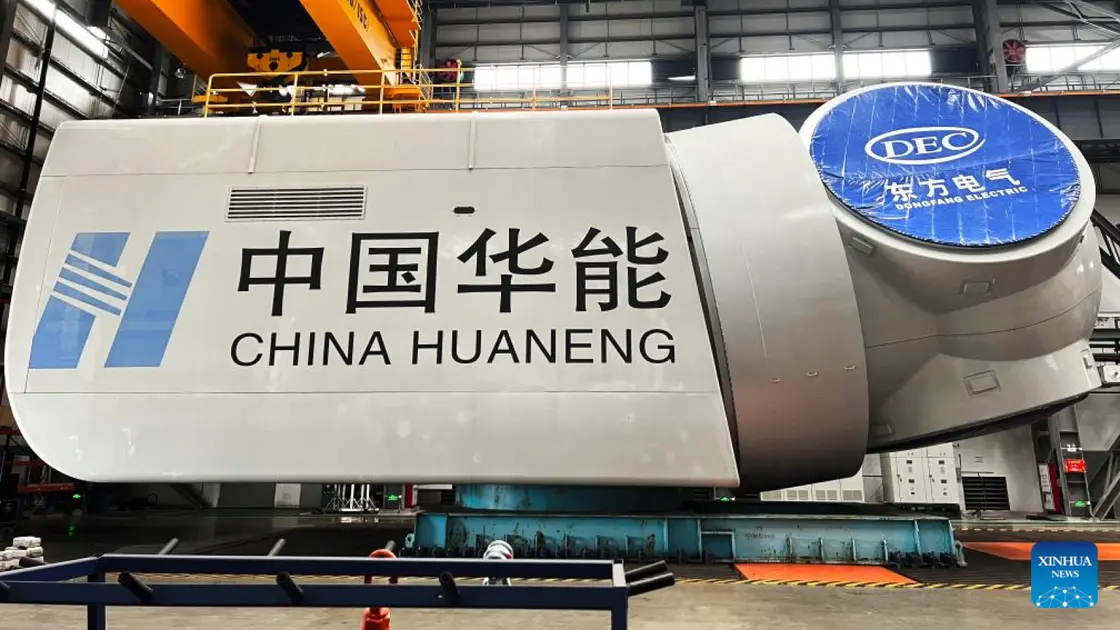T4K3.news
Floating wind breaks a record
China unveils a 17 MW floating turbine in a test off Yangjiang, signaling potential for deep-water wind energy.

Floating offshore wind turbines open a new field by reaching deep water, promising larger scale and new markets for renewables.
China builds record breaking floating wind turbine reshaping energy
Chinese engineers from China Huaneng Group and Dongfang Electric Corporation have unveiled a prototype floating wind turbine described as a record breaker. The turbine is rated at 17 MW and sits on a 489-foot tall tower with blades spanning 860 feet in diameter. If deployed at scale, each unit could generate about 68 million kilowatt hours per year, enough to power around 6,300 households in the United States. The test will take place off Yangjiang, China, in the coming months. This design aims to expand offshore wind into deeper water and away from the limitations of fixed bottom foundations.
Floating wind turbines can access waters too deep for conventional foundations, potentially expanding the global footprint of wind power. Current fixed bottom wind farms are concentrated in shallower seas, but most offshore regions are too deep. NOAA and GWEC data show large shares of the ocean remain beyond fixed-bottom reach. If floating technology proves reliable and cost effective, it could accelerate wind development in regions with deep seas and help diversify supply chains for turbines, moorings, and platforms.
Key Takeaways
"The sea becomes the new roof for clean energy"
highlight
"Floating wind could unlock vast new energy potential"
factual
"Scale changes everything in wind energy"
opinion
The move signals a strategic push by China to lead in a technology that could redefine offshore wind. If floating wind scales, nations with deep coastlines may shift their energy mix away from land and shallow seas. Yet moving from prototype to mass deployment will hinge on cost, reliability, and the ability to connect large numbers of turbines to grids. The wider implication is a shift in energy diplomacy as suppliers and countries compete for floating hardware, mooring systems, and floating platforms.
Global interest in floating wind could redraw timelines for decarbonization as deep-water sites unlock new capacity. The outcome will depend on manufacturing capacity, supply chain resilience, and how quickly regulators align on grid integration and financing. A successful rollout would raise the competitive bar for offshore wind and press other nations to scale up their own programs.
Highlights
- Sea power could redefine where wind is built
- Scale matters more than turbine size
- The next tests will show if deep water wind can power the grid
- Floating wind could redraw the world map of energy
Political sensitivity around state backed floating wind project
The project is led by state owned Chinese firms, raising questions about budget, national strategy, and investor confidence. The move could invite domestic and international scrutiny and geopolitical tension as offshore wind expands.
The coming milestones will show if floating wind can scale for broad use.
Enjoyed this? Let your friends know!
Related News

US tariff rates reach highest level since 1930s

Record kick in preseason

Dame Cleo Laine passes away at 97

Marine heatwaves indicate critical ocean changes

Canada wildfires affect U.S. air quality

Jonathan Edwards' record remains unbroken after 30 years

Dina Asher-Smith and Zharnel Hughes break UK Championships records

British nationals sentenced for drug smuggling in Bali
